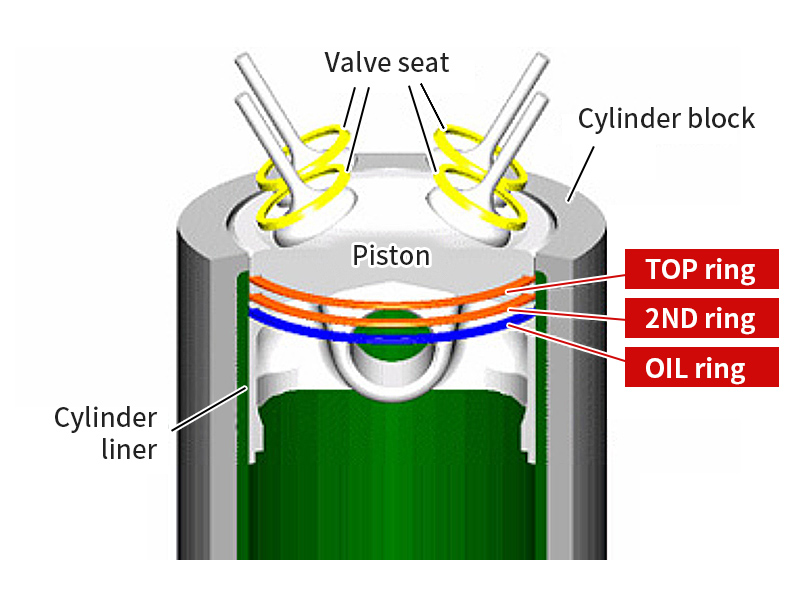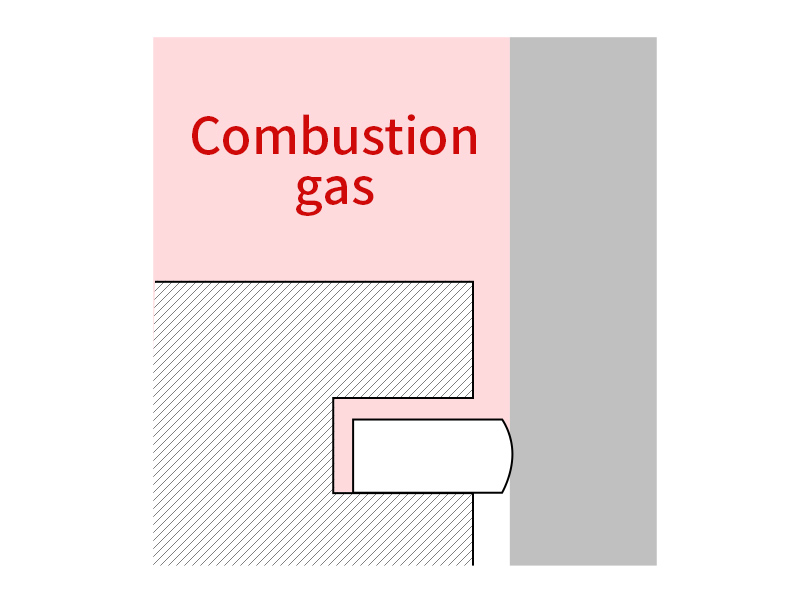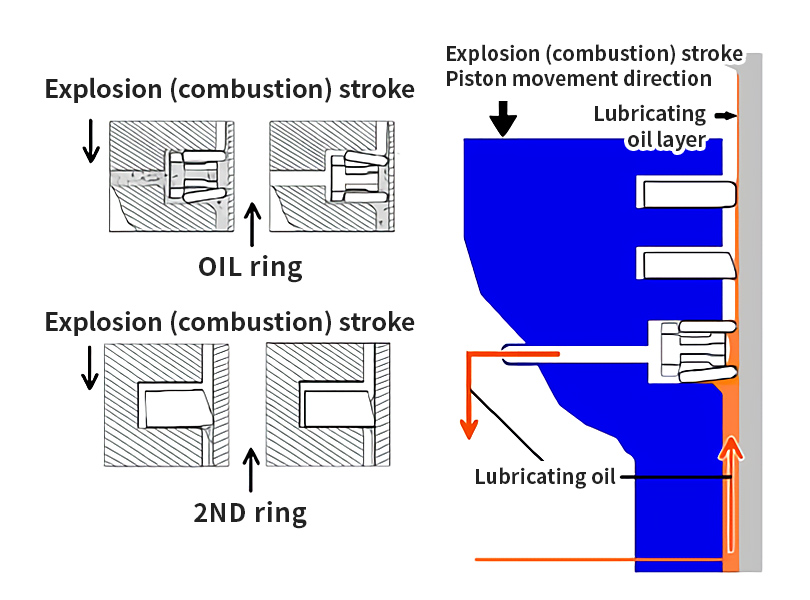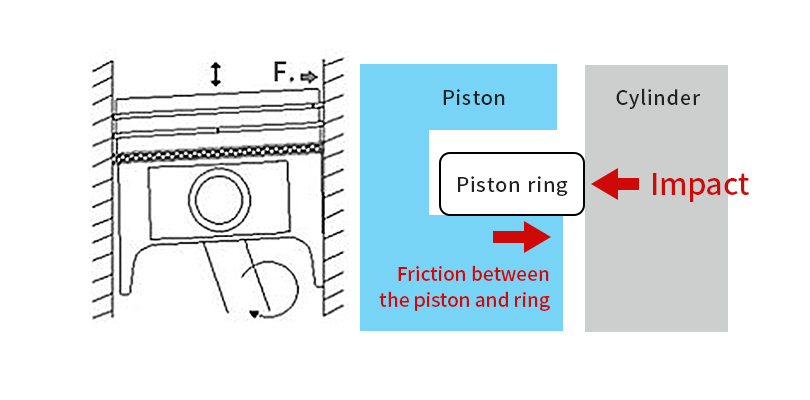What is a piston ring?

Between the piston and cylinder, the piston ring is a part that is needed for an engine to work efficiently. Piston Rings have 4 main functions.
4 functions of Piston Rings
Function 1 Seal for combustion gas

Function is to fully maintain in-cylinder airtightness between the piston and cylinder wall
It works hard to keep a lid on combustion gas leaking into the gap between the piston and cylinder created at the time of an explosion.
If combustion gas leaked, full power could not be realized and fuel consumption would increase, which is detrimental both economically and environmentally.
Function 2 Control lubricating oil (engine oil)

Function to constantly create the minimum required lubricating oil layer to prevent burn
Inside an engine's cylinder, the piston ring is subject to high-temperature combustion gas, and, with the piston, must travel and return many thousands of times a minute, or even more.
To ensure the piston ring and cylinder do not burn, and to prevent excess lubricating oil getting inside the combustion chamber, the cylinder wall lubricating oil layer is controlled at the minimum required.
Function 3 Heat conduction function

Function that releases heat from the piston to the cylinder
When the gas explodes, the temperature inside the piston reaches a heat of approximately 300 degrees Centigrade. If that heat remains inside the piston, the engine may be damaged, so that heat must be released from the interior. The piston ring helps to do that.
Function 4 Piston attitude support

Function that prevent the piston making strong contact with the cylinder wall
If the piston is at an angle, as it moves it makes contact with various places, and this can cause engine damage. The piston ring supports the piston so the piston can travel smoothly up and down.
